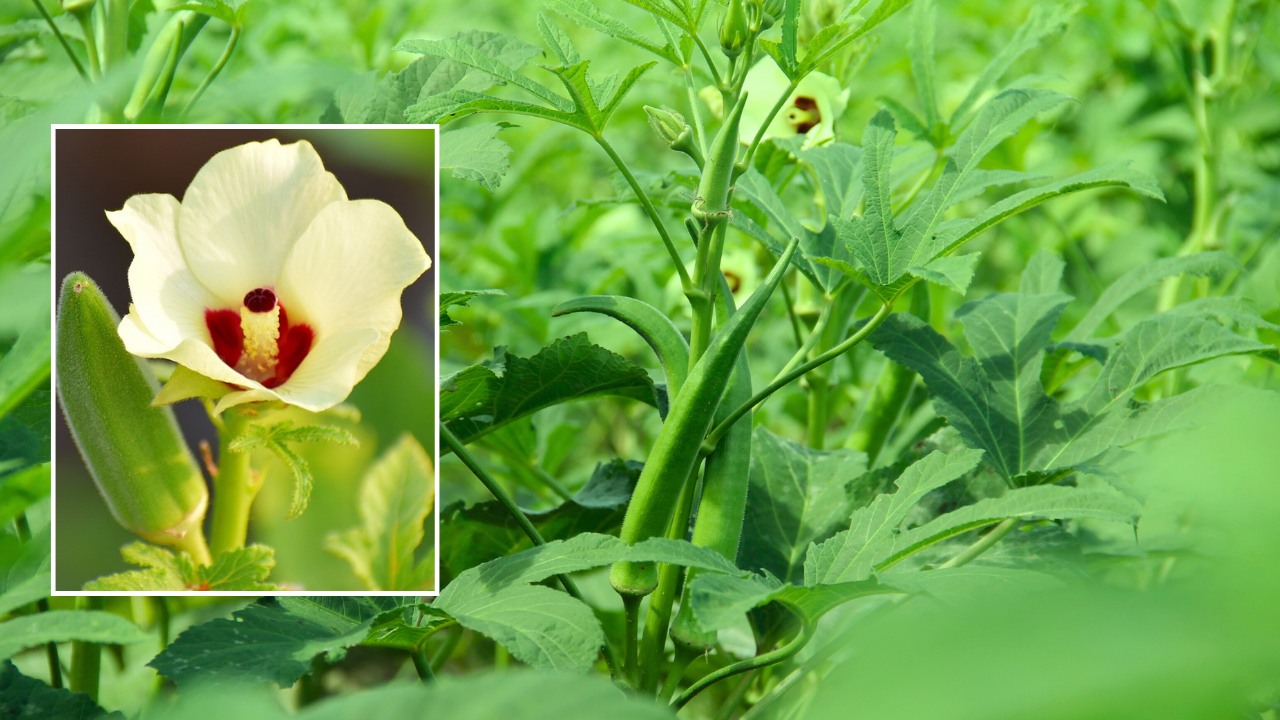Learn the secrets to successfully planting and growing okra (bhindi). Follow our guide for a bountiful okra harvest this season.
Okra, also known as "Bhindi" in many parts of the world, is a warm-season vegetable prized for its tender pods and versatility in culinary dishes. Whether you're a seasoned gardener or a beginner looking to grow your own produce, planting okra can be a rewarding experience. In this comprehensive guide, we'll walk you through the step-by-step process of planting and caring for okra plants to ensure a bountiful harvest.
Introduction to Okra (Bhindi)
Okra belongs to the mallow family and thrives in warm climates with plenty of sunlight. Originating from Africa, it has become a staple in cuisines around the world due to its mild flavor and nutritional value. Okra pods are rich in vitamins A and C, as well as fiber, making them a healthy addition to any diet.
Selecting the Right Okra Variety
Before you start planting okra, it's essential to choose the right variety for your growing conditions. Consider factors such as the length of your growing season, available space, and preferred pod size. Some popular okra varieties include Clemson Spineless, Emerald, and Burgundy.
Preparing the Soil
Okra plants thrive in well-drained, fertile soil with a pH level between 6.0 and 6.8. Begin by testing your soil's pH and amending it as necessary to achieve the optimal range. Incorporating organic matter such as compost or aged manure will improve soil structure and nutrient content, providing a healthy environment for your okra plants to grow.
Planting Okra Seeds
Plant okra seeds directly into the garden once the soil has warmed to at least 65°F (18°C). Sow seeds 1 inch deep and space them 12 to 18 inches apart in rows spaced 3 feet apart. Okra seeds germinate quickly in warm soil, usually within 7 to 14 days.
Providing Adequate Water and Sunlight
Okra plants require consistent moisture to thrive, especially during the flowering and fruiting stages. Water deeply once or twice a week, ensuring that the soil remains evenly moist but not waterlogged. Additionally, okra plants need full sunlight, so choose a planting location that receives at least 6 to 8 hours of direct sunlight per day.
Fertilizing Okra Plants
To promote healthy growth and abundant fruit production, fertilize okra plants regularly throughout the growing season. Organic fertilizers such as compost, fish emulsion, or aged manure are excellent choices for feeding okra plants without the risk of chemical buildup in the soil. Alternatively, you can use synthetic fertilizers formulated specifically for vegetables, following the manufacturer's instructions for application rates.
Managing Pests and Diseases
Like all garden plants, okra is susceptible to a variety of pests and diseases that can hinder growth and reduce yields. Common pests that affect okra include aphids, caterpillars, and spider mites, which can be controlled using natural methods such as companion planting, insecticidal soaps, or neem oil. Regular inspection and early intervention are key to preventing pest infestations and minimizing damage to okra plants.
Pruning and Training Okra Plants
To encourage bushier growth and improve air circulation around the plants, prune okra plants by removing lower leaves and any suckers that develop along the main stem. Additionally, consider staking or trellising tall okra varieties to support heavy fruit-bearing branches and prevent them from bending or breaking under their weight.
Harvesting Okra
Okra pods are ready to harvest when they reach 2 to 4 inches in length and are still tender and immature. Use a sharp knife or pruning shears to cut the pods from the plant, taking care not to damage the stem or nearby foliage. Harvest okra regularly, every 2 to 3 days, to encourage continued production throughout the growing season.
Storing and Using Okra
Fresh okra can be stored in the refrigerator for up to one week, although it's best to use it as soon as possible for optimal flavor and texture. Alternatively, okra pods can be blanched and frozen for long-term storage, allowing you to enjoy homegrown okra year-round in soups, stews, and stir-fries.
Tips for Success
- Monitor soil moisture levels regularly and adjust watering as needed to prevent drought stress or waterlogging.
- Mulch around okra plants with organic materials such as straw or shredded leaves to conserve moisture, suppress weeds, and regulate soil temperature.
- Rotate okra crops annually to reduce the risk of soil-borne diseases and nutrient depletion.
- Keep an eye out for beneficial insects such as ladybugs and lacewings, which help control pest populations naturally without the need for chemical pesticides.

Frequently Asked Questions (FAQs)
1. Can okra be grown in containers?
Yes, okra can be grown in large containers or raised beds filled with well-draining potting mix. Choose dwarf or compact varieties for best results in containers.
2. How often should okra plants be fertilized?
Fertilize okra plants every 4 to 6 weeks throughout the growing season with a balanced fertilizer high in nitrogen, phosphorus, and potassium.
3. What are the best companion plants for okra?
Okra thrives when planted alongside companion plants such as basil, marigolds, and peppers, which help repel pests and attract beneficial insects.
4. How tall do okra plants grow?
Okra plants can reach heights of 3 to 6 feet, depending on the variety and growing conditions. Taller varieties may require staking or trellising to support heavy fruit-bearing branches.
5. When is the best time to harvest okra pods?
Harvest okra pods when they are young and tender, typically 2 to 4 inches in length, to ensure the best flavor and texture.
In conclusion, planting okra (Bhindi) can be a rewarding experience for gardeners of all skill levels. By following these expert tips and techniques, you can cultivate healthy okra plants and enjoy a bountiful harvest of tender, delicious pods throughout the growing season.

